In the first part of the material we talked about the present day of the enterprise. In the second we are going to tell about its story. Read "We are making rockets for the S-400!" - Part 1
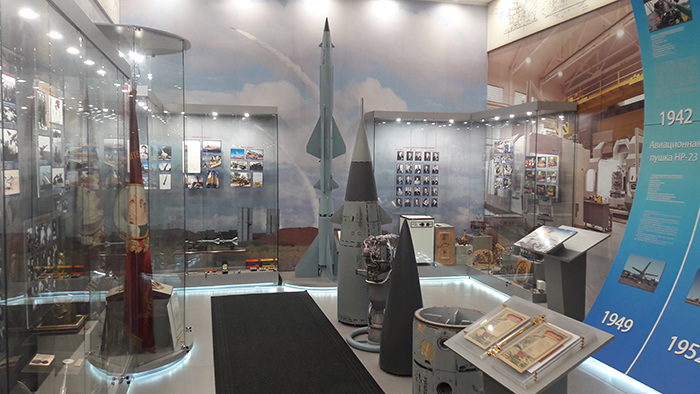
The task of the factory museums is to keep the history of their enterprises and the memory of distinguished employees. Before proceeding to the presentation of the long path of the Avangard, we make an important reservation. In the open access, they “walk” different versions of the history of the enterprise. There is nothing surprising in this fact: similar is observed in other "secret factories" of the national defence industry complex. The primary reason for this was the need for non-disclosure of state secrets.
The version of the story presented on June 13–14 was voiced by the deputy head of the enterprise for special programs. It begins with the land, where today are located the production facilities of the plant. Once there were located woodworking workshops, which in the twenties of the last century involved the manufacture of elements of airframes by the orders of Moscow aircraft factories. Then, during the thirties, along the northern arc of the Moscow District Railway (Bratsevo, Koptevo), a developed network of aviation industry enterprises developed, including, in particular, the Central Institute of Aviation Motors (CIAM), Plant No. 20 for the production of aircraft engine units, etc.
When in 1941 The Wehrmacht approached Moscow, the State Defence Committee made a series of consecutive decisions on the evacuation of the capital's industry inland (the 20th plant to Omsk) and the movement of the remaining production equipment between the liberated sites. On the territory previously occupied by the above-mentioned enterprises, by the decision of the State Defence Committee of January 24, 1942, Plant No. 41 NCAP was established. This date is taken as the starting point of the history of the current Avangard.
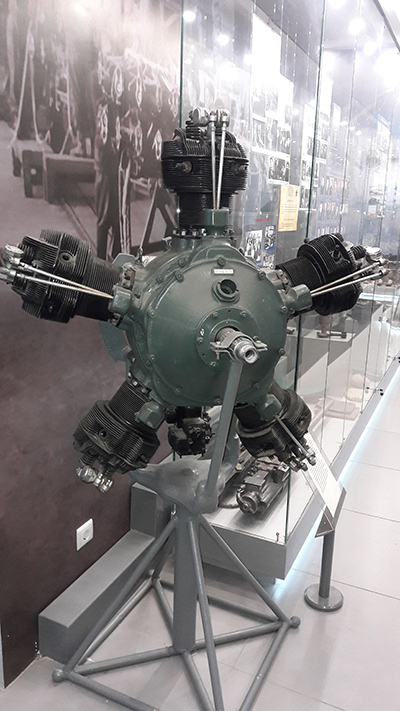
In summer of 1942, the plant adjusted the production of five-cylinder radial engines M-11 with a capacity of about one hundred horsepower. They, in particular, staffed training aircraft designed by Yakovlev and Polikarpov, including the legendary U-2 biplane (Po-2). At the same time, the worn-out M-11 and M-62 were repaired at the production site. On the walls there are samples of the newspaper “All for the Front”, which tells about the workers of the enterprise and their labor exploits. For the excellent performance of the tasks in 1945, the plant was awarded the Order of the Red Star.
After the war, the company receives another task - the mass production of small arms and guns for Tu-4 bombers. Beginning in 1949, the air cannons NR-23 of 23 mm caliber were produced here. The museum exposition includes three samples of such weapons, as well as one full-scale exhibit of a more powerful H-37D of 37 mm caliber and later double-barrelled GS-23-2.
Anti-aircraft missile systems S-25 and S-75
Since the middle of the last century, the main theme of the enterprise has become rocket. Preparation of the serial production of the V-300 anti-aircraft guided missiles started at the end of 1952. The first effective shooting at a real aerial bomber-type target took place on May 25, 1953. SAM of this type (starting weight - 3.58 tons, length about 12, diameter 0.65 meters) could hit a target flying at altitudes from three hundred to 25 thousand meters, at a maximum distance of 35 kilometres.
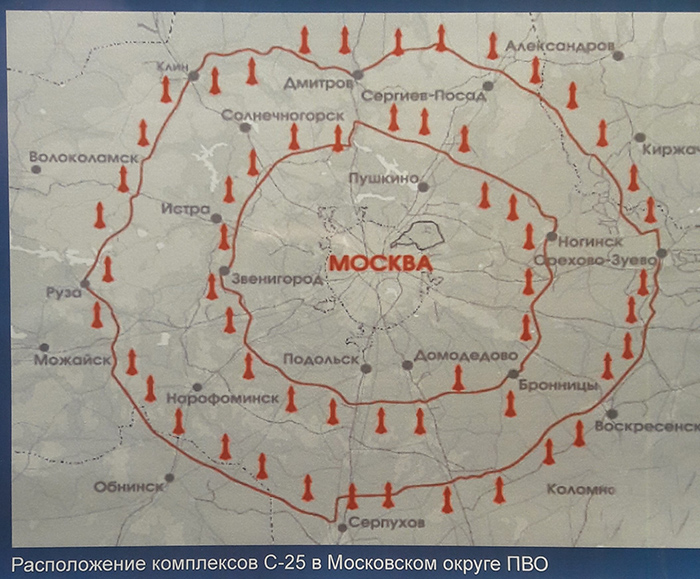
The B-300s were intended for the S-25 stationary anti-aircraft missile system (the Berkut cipher), created specifically to protect the metropolitan industrial area from the massed raids of enemy aircraft. The S-25 system defended the capital in 1955. Around Moscow were located two rings of anti-aircraft missile regiments. The outer belt of defence passed through Ruzu, Obninsk, Serpukhov, Kolomna, Voskresensk, Orekhovo-Zuyevo, Kirzhach, Sergiyev Posad, Dmitrov and Klin. The inner ring connected Zvenigorod, Podolsk, Domodedovo, Bronnitsy, Istra, Solnechnogorsk, Pushkino and Noginsk. Coordination of the regiments went through a network of command and control centres and technical bases.
At the appropriate stand, we read: “For its time, the C-25 system was a technical masterpiece. It was the first multi-channel anti-aircraft missile system capable of solving the tasks of simultaneously tracking and hitting a significant number of targets and organising the interaction between individual batteries. ” After being removed from service in 1987, the B-300s that were preserved in the arsenal were converted into the Swift targets.
Just a couple of years after the C-25, the plant was assigned a new task for the mobile (mobile) complex C-75. It turned out so successful that it was massively produced in several basic versions: "Dvina", "Desna", "Volkhov" and "Volga" both for its own armed forces and for export to 24 countries of the world (used by the armies of forty states). For their staffing, the industry has collected about 45 thousand missiles of many variants and modifications (1D, 11D, 13D, 15D, 20D, 5B29, etc.) including about ten thousand 5YA23 and several hundred performed with special warheads. Unlike the single-stage B-300, they had a powder accelerator, which was used for the initial acceleration of the second (main) stage with its own power plant on liquid rocket fuel.

S-75 "Dvina" in the Museum of the Air Force of India
A separate stand tells about the combat use of the S-75, focusing on two points. The factory workers remember that on May 1, 1960, the rocket they assembled interrupted the flight of the high-altitude U-2 American reconnaissance aircraft. The scheme drawn according to the radar data in 1998 by Lieutenant General G.S. Legasov. According to it, the servicemen of the three air defence units located in the area of the city of Sverdlovsk carried out several launches on real air targets. The first hit U-2 at 8:53 am And after a couple of minutes, the second, released by the neighbouring division, exploded among the wreckage of a falling plane.
The third division also fired (9:23), but already by mistake, not by a foreign intelligence officer (which had been destroyed by that time), but by the MiG-19 fighter, which was raised to intercept the intruder, but could not go on the attack due to insufficient altitude. Prior to this, the goal was unsuccessfully trying to attack the Su-9. At the time of discovery of fire, the MiG was manoeuvring to land on the airfield. Pilot Sergey Safronov died, and the American reconnaissance pilot Francis Gary Powers escaped by parachute, was detained and convicted. True, the punishment imposed in full (ten years) did not serve: after one and a half years in prison, he was exchanged for Soviet agent Rudolf Abel, revealed by the Americans.
The museum exhibit contains archival photographs of the wreckage of the spy plane and the Powers trial. A couple of years after the memorable events, on the holiday of the international solidarity of the workers - on May 1, the plant was awarded the Order of the Red Banner of Labor. In passing, we note that the success of the enterprise in the development of rocket technology, the formulation and maintenance of its production in the period from 1953 to 1975. associated with the personality of the then director Alexei Yakovlevich Sekachev.
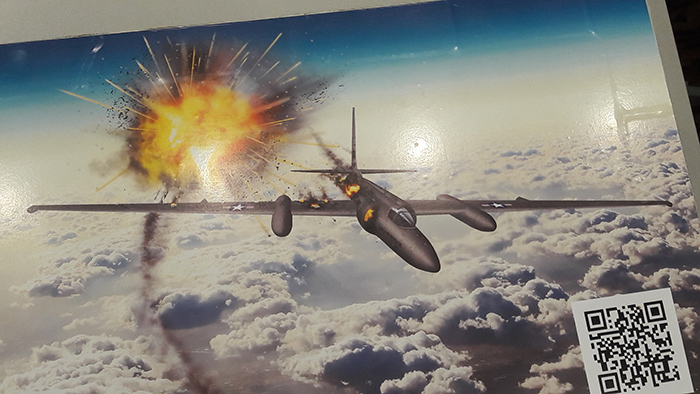
The second moment is devoted to the war in Southeast Asia (1965-1972). The Soviet Union delivered 7658 missiles to S-75 missiles to the Democratic Republic of Vietnam, 6806 of which were fired. According to our military advisers, over 650 American aircraft, including B-52 strategic bombers, were destroyed by Vietnamese air defence systems. In experienced hands, the complex still represents a formidable weapon. For example, the ongoing armed conflict on the territory of Yemen includes an episode in which the S-75 division, operating on the Hussite side, shot down the American MQ-1 Predator assault unmanned aerial vehicle.
Long decommissioned by the Russian army, the complex continues to serve as a platform for creating flying targets. MMP Avangard produced, by refining the ZD 20D (DSU) and 5YA23 missiles, the Tinitsa target missile (RM) with indexes 1, 6, 23, as well as Kite. They were used for training calculations of air defence. The last representative of such products is considered RM "Bekas"; It remains in demand to the present.
The RM is a two-stage target (accelerated powder and a second-stage fluid engine), which is obtained by completing the 5Y23 missile defence missile system with the replacement of the high-explosive fragmentation warhead with a mono-block of the elimination system with flight time triggering. Bekas is launched from standard facilities of the S-75M complex (S-75M3) with minor modifications. General characteristics of targets based on old SAMs: effective dispersion surface (ESR) 0.1-0.4 square meters, maximum range and altitude of 150 and 30 km, respectively, the flight time is three minutes.
Missile defence of the capital region
A special page in the history of the Avangard plant is the contribution of the company to the creation of a nuclear missile shield designed to protect the administrative-industrial region of Moscow from the attacks of enemy intercontinental ballistic missiles. According to the information on a separate stand, the development of the A-35 antimissile system began in 1958 under the direction of the chief designer Kisunko. The draft design of anti-missiles A-350ZH (5B61 or B-1100) was completed in three years.
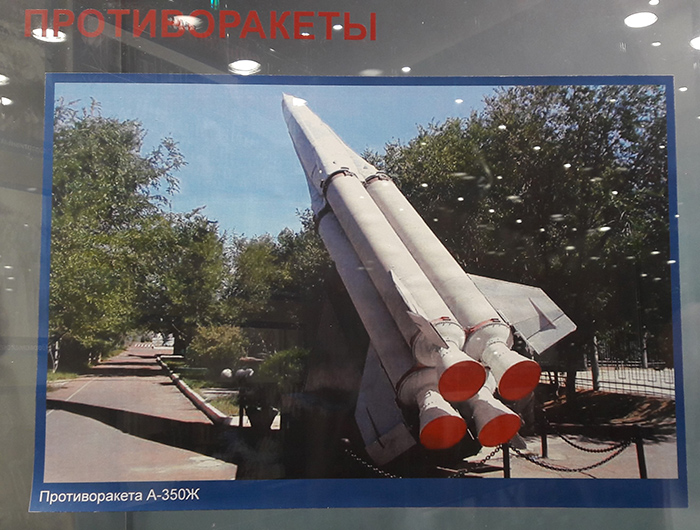
Anti-missile A-350ZH
The launch launches of the experienced 5TA variant missiles were carried out in April 1962, and three and a half years later, the A-350ZH in standard equipment. It had a launch range: the minimum - 130 km, the maximum - 400 km. Heights of destruction - from 50 to 400 km. The first public demonstration (inside a transport and launch container located on a self-propelled wheeled chassis) took place at a parade on November 7, 1967, to mark the fifty years of the Great October Socialist Revolution.
The first phase of the A-350 system successfully passed complex state tests on March 25, 1971, and in the fall it entered into combat duty. The number of channels allowed to reflect the impact of a group of eight paired ballistic targets attacking from one or several directions. The A-350ZH was the first strategic missile defence system in the world to be adopted. It was followed in December 1977 by an improved A-35M.
The company also participated in the A-925 (51T6) anti-missile program, the photographs of which are presented on the stand without explanation. According to the oral comments of the organisers of the excursion, the batch production on the relevant topic was transferred through cooperation to another enterprise.
It should be noted that at one time two big themes coexisted at the plant - Grigori Vasilievich Kisunko’s anti-missile systems and Alexander Andreyevich Raspletin's anti-aircraft systems. The common thing between them was that both rockets were designed by the design bureau of Peter Dmitrievich Grushinin, better known as the Fakel ICB (Khimki). The 5V28 issue for the C-200V system was the next issue for the enterprise following the S-75. However, it was soon transferred to the Leningrad Northern Plant (LSS), and the Moscow masters were instructed to stage the next generation serial production of the anti-aircraft missiles.
Anti-aircraft missile system S-300PT / PS
The combination of advanced technical solutions makes it possible to attribute S-300PT / PS to the next generation of domestic air defence systems.
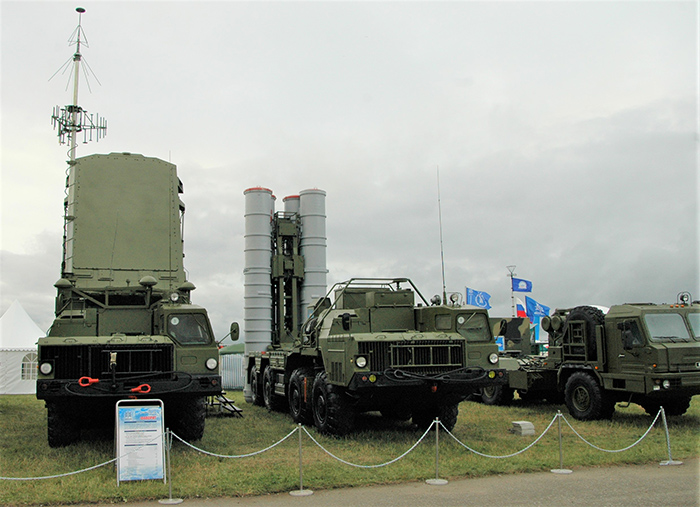
First, the practical implementation of the idea of a vertical launch of a rocket directly from a transport and launch container (TPU), which also provides long-term (up to ten years) storage. The second is the use of radar vision and guidance with a phased antenna array, which use electron beam scanning technology (instead of mechanical). Third: the introduction of digital electronic computers, which, together with the new radars, enabled multichannel tracking and firing of air targets. Fourth: building a group of divisions around a single command post, which includes a combat command vehicle and radar (s) for detecting targets.
The next point is the interaction of air defence systems with automatic control system (ACS) of air defence. This opened up the possibility of coordinating actions (distribution of targets in the case of massive air strikes, etc.) between different types of systems armed with various long, medium and short range missiles.
The production of the serial production of the S-300 in the air defence version of the country falls in the mid-seventies. In 1978, the system successfully passed state tests, and the following summer, the first regiment of S-300PT took up combat duty. It was completed with 5V55 (B-500) missiles, the production of which was entrusted to Muscovites.
It was hard to master the new missile defence in mass production and bring the quality of commercial products to the level of customer requirements. In particular, two or three years were required to eliminate the serious shortage of the early series rocket - burners of gas rudders (they are used in addition to aerodynamic control surfaces). A sample of the corresponding fire defence missile testing unit is presented in the factory museum. According to the memories of the factory workers, it took more than one hundred launches to identify and solve various problems in the course of fire tests with the aim of finishing the rocket. “Only then did the serial 5V55 become truly trouble-free,” - our interlocutors say.
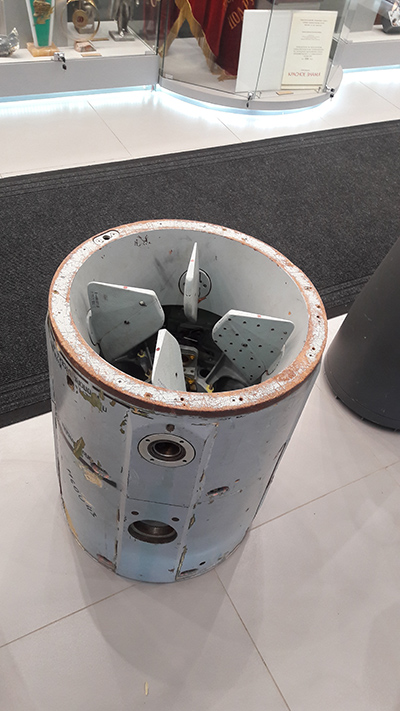
Block of gas-dynamic rudders 5V55
Avangard was the first to master the production of a 5V55 missile defence system, which was then also produced at the Severny Zavod production plant (Leningrad) and the Zhulyansky mechanical plant (Kiev). According to open sources, Ukrainian specialists in cooperation with Muscovites moved from PR 5V61 (A-350ZH) to ZUR 5V55, which was produced from 1975 to 1995. There are several variants of execution. Early 5V55K weighing 1480 kg had a maximum launch range of 45 km.
A later version weighed 1664 kg and could hit a target at a distance of up to 75 km. Following the ZOR with trajectory control over the radio channel, the 5V55R went into a series with a semi-active homing head and the implementation of the principle of “tracking a target through a rocket”. According to our interlocutors, more than twelve thousand missiles of the 5V55 family were manufactured. For the first time, elements of the S-300PS system (5P85D launchers on a self-propelled chassis, each with four TPU missiles) participated in the Victory Parade on Red Square in 1990.
"Favorite"
Following the S-300PS, the designers of NPO Almaz named after A.A. Raspletin developed a much more advanced version - the Favorit system. As the information on the relevant stand explains, in addition to the aerodynamic, this system can also hit ballistic targets. "Favorite" was the first multi-channel air defence system, capable of accompanying one air defence system to 6 targets and directing them to 12 missiles. The system solves all problems automatically with the help of digital computing means. The function of the operator is to control the operation of the equipment and launch rockets. “Modern modifications of the S-300 air defence missiles with one air defence missile system can hit up to 36 aerodynamic or ballistic targets, directing up to 72 missiles at them,” - tells the source.
The most important element of the S-300PM / PMU is the SAM of the 48N6 family developed by the ICB Fakel, which is noticeably superior in performance to its predecessor. As in the case of 5V55, the first production of mass-produced products was mastered by the Avant-garde plant. Then, in the second half of the eighties, the installation batch was released by the Ukrainian subcontractors from the Zhulyany plant, now known as SE VIZAR. The industry managed to gather about a thousand and four hundred missiles of a new family before “Perestroika with Glasnost” came into the country. Due to the collapse of the Soviet Union, the volume of state orders sharply declined, and at the turn of the century it almost dried up.55, the first production of mass-produced products was mastered by the Avangard. Then, in the second half of the eighties, the installation batch was released by the Ukrainian subcontractors from the Zhulyany plant, now known as SE VIZAR. The industry managed to gather about a thousand and four hundred missiles of a new family before “Perestroika with Glasnost” came into the country. Due to the collapse of the Soviet Union, the volume of state orders sharply declined, and at the turn of the century it almost dried up.
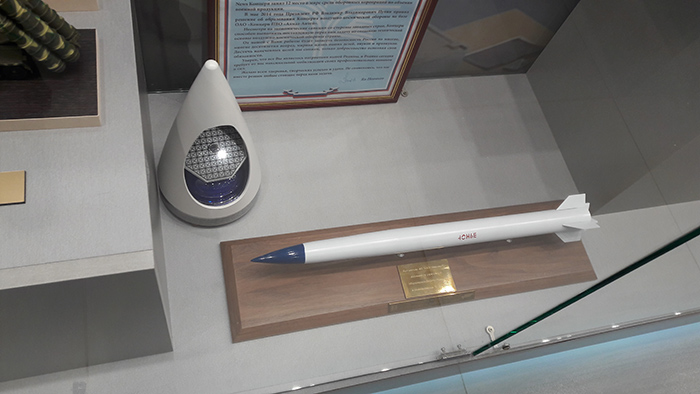
Scale model of the 48H6 rocket and its homing head
The actions of the plant’s team for staging and maintaining the serial production of rockets for the S-300 are connected with the activities of Viktor Pasko, who led the company from 1975 to 2000. Behind him, Leonid Albertovich Bryukhanov becomes Director General of the Avangard Plant. When the saving Chinese order came, the company had to restore the chain of suppliers that had been almost lost by that time. A great help was our own design bureau, created back in 1967 on the basis of the department of the chief designer of the plant and the specialists of the ICB Fakel.
Thanks to the efforts of the plant design bureau and the Fakel design bureau, the originally established service life of the S-75 missiles was brought to 17.5-27.5 years. After the loss of a number of production facilities of the external assembly in the republics of the former USSR, the Avangard Plant for Industrial Engineering ensured its own production of units and components, transport and launch containers (for 48H6) and packages for transporting products. The company constantly systematises the issues of operation and assessment of the reliability of the fleet of used products included in the S-300 system, both in Russia and abroad. MMP Avangard is a basic enterprise for the restoration of long-running 5V55 products manufactured by the Leningrad North and Zhulyansky Mechanical Plants. Based on the results of the work being carried out, decisions are made to increase the operating time.
S-400 "Triumph"
When, at the expense of partners in military-technical cooperation, the industry restarted, together with other elements of S-300PM (PMU-1, PMU-2), production 48H6 (in the form of improved versions with indices "E", "E2" and "E3") , our defence department took advantage of the situation in their own interests. True, instead of purchasing completely new sets, the main customer chose to spend the budget on upgrading the existing fleet in improved versions of S-300PM-1 and (later) S-300PM-2. And the savings invested in the development of a more advanced system - S-400 "Triumph". She entered service in 2007 and has since been massively supplied to the troops.
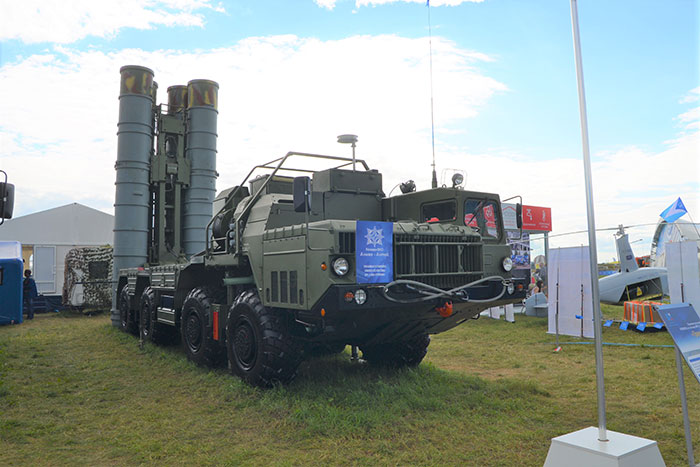
Initially, the S-400 was conceived as the next step in the development of the S-300 in the variant with the PM-3 index. It uses both the modified elements of the predecessor and the newly created ones. For example, radar guidance and long-range missiles firing 48N6DM and 40N6 (as an addition to the early versions of 48N6). Since both products in oral speech sometimes pass as a “long-range rocket”, some confusion arose. It is aggravated by an increased secrecy regime with respect to the development prospects of Triumph in the direction of the so-called. "Triumphant."
The name “40Н6” got on the print pages several years ago, but the characteristics were not revealed until the opening of the military-technical forum ARMY-2018. A brief multimedia presentation of the product, demonstrated at the Almaz-Antey stand, gives several performance figures, including a maximum firing range of 380 km and a target speed of up to 4800 m/s.
Such a long range involves the use of a two-stage configuration. Meanwhile, a graphic illustration of the aforementioned multimedia presentation prepared for the ARMY-2018 forum shows a single-stage rocket with external 48H6 contours. It is interesting that the scale model of the rocket with the inscription “40Н6” printed on it, presented in the museum of the MMP Avangard, also repeats the geometry of the 48Н6. In a word, there are still many mysteries and omissions in the “long-range rocket” business, and big surprises await us ahead.
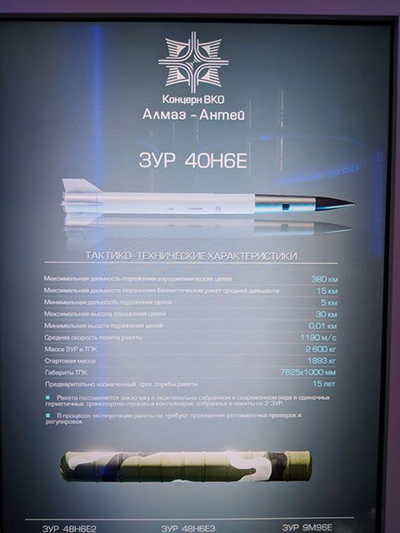
The organizers of the project “Otkroy#Mosprom” (www.otkroimosprom.ru) call the Moscow Aviation Plant “Avangard” the only manufacturer of missiles for the S-400 in the country. At the same time, for several years, the leaders of Rostec Corporation and Rosoboronexport JSC have been talking about the construction of completely new enterprises in Kirov, Nizhny Novgorod and near St. Petersburg, specifically for the production of S-400. During the tour, we were told that a modern production equipment was installed at the site of the backup plant and it was being set up. In short, interesting news is waiting for us along this line in the near future.











